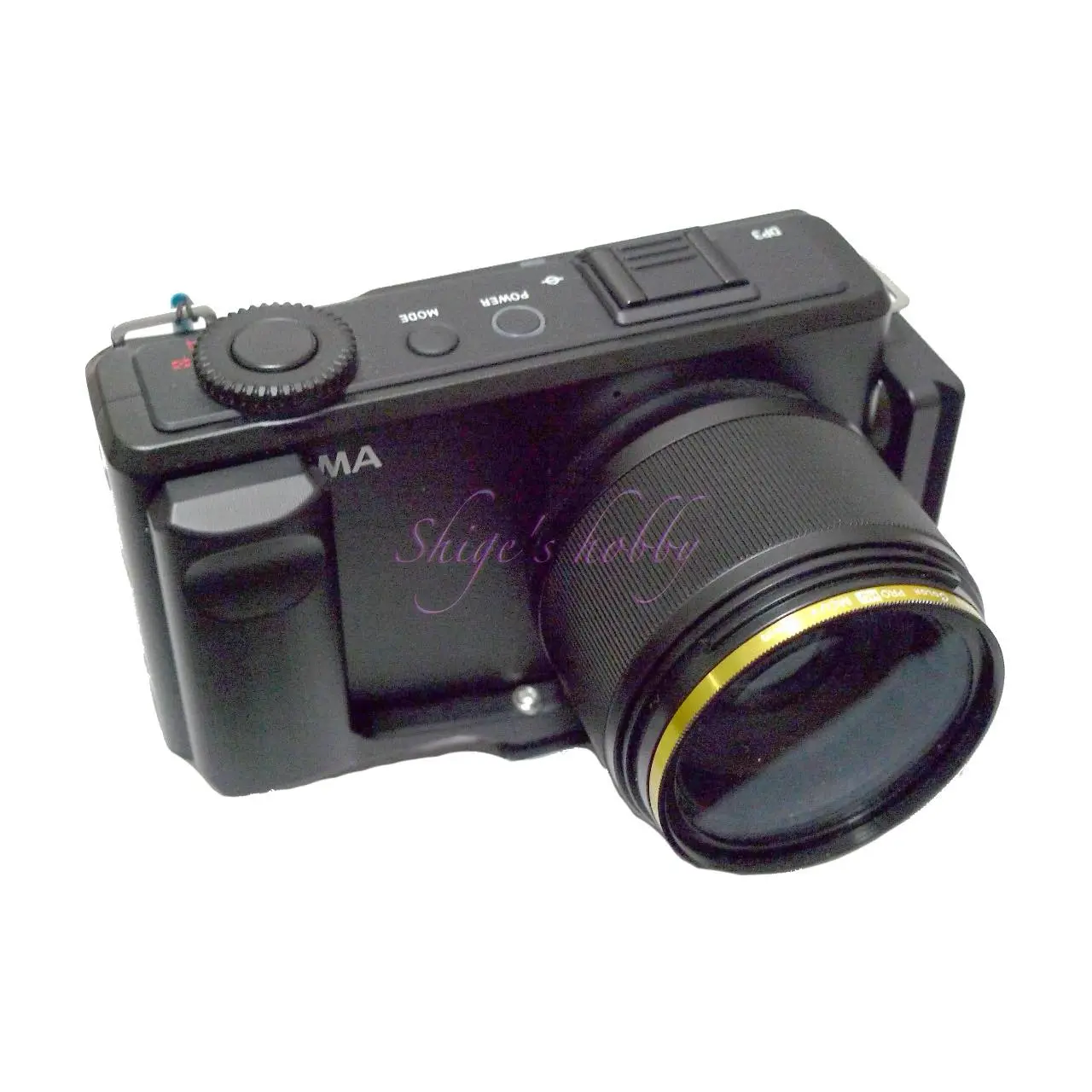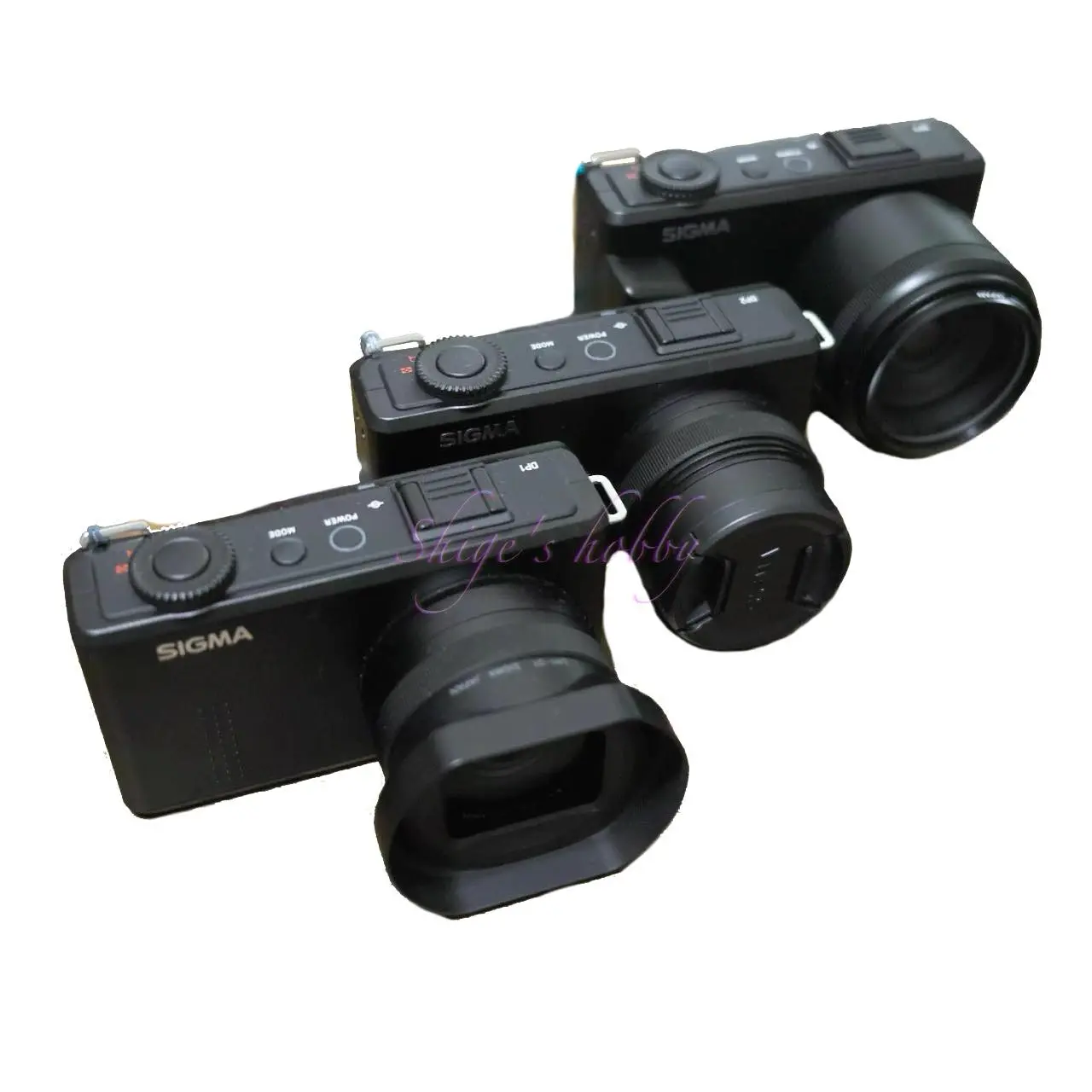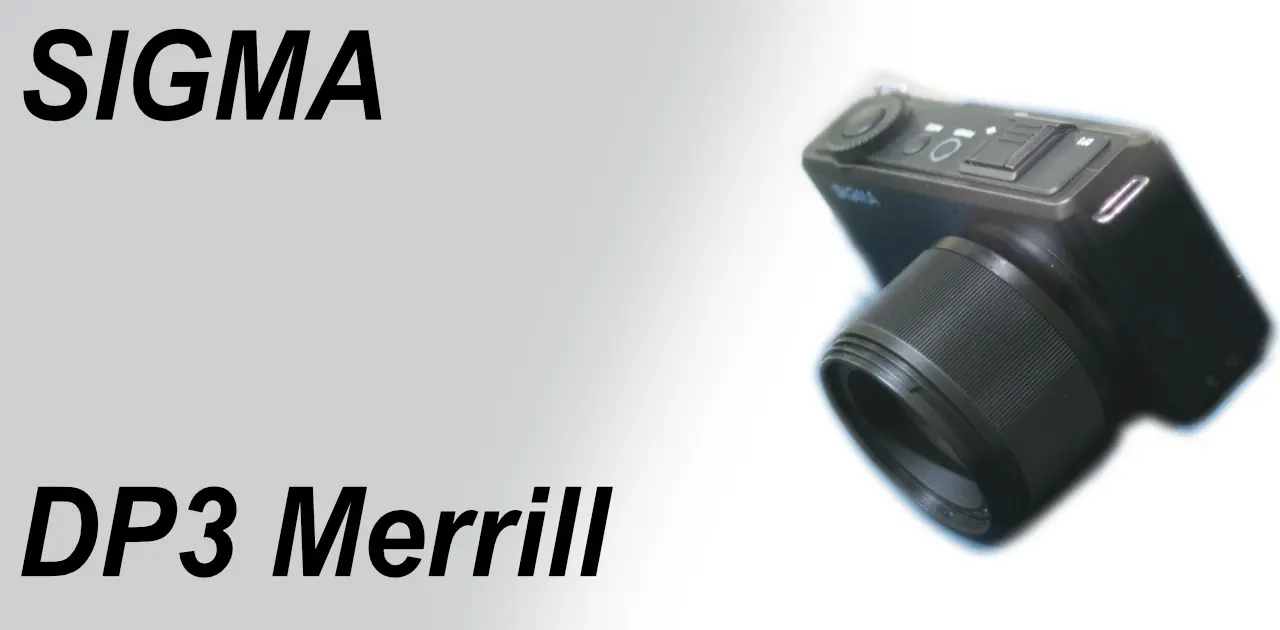Last updated on 2025-10-26
A review and Photo example of the SIGMA DP3 Merrill.
- Please see the disclaimer regarding advertising here.
- Italicized links in the text are advertisement links that take you to other sites.
Table of contents
Gallery
Review


1.Overview
The DP3 Merrill is a compact digital camera released by Sigma in 2013. It is equipped with a 50mm lens and an APS-C size sensor, so the focal length in 35mm equivalent is 75mm. The minimum shooting distance is 22.6cm, making it a medium telephoto macro camera capable of 1:3 macro shooting.
The following contains the same description for the DP1 Merrill, DP2 Merrill, and DP3 Merrill.
This camera has been on the market for over 10 years, so it is called an old compact digital camera.
The sensor, which is the heart of a digital camera, is equipped with a third-generation Foveon sensor with the same APS-C size as the SD1, and has a resolution of 15 million pixels x 3 layers. In the case of raw images in X3F format, a file of about 50MB is generated. Since the file size of raw data for 100 million pixels of X2D is 200MB, it is considered to have data of 1500*3=45 million pixels. In 2012, a data volume of about 50 million pixels was achieved, so it seems that the slow file writing after shooting and heavy PC processing were inevitable at the time, even though it is 2024.
The battery is Sigma model number BP-41, and is compatible with the DB-65 used in Ricoh GR series compact cameras. In addition, Fujifilm, Leica, and Panasonic also use the same shape, so it is good that it is not difficult to obtain compatible batteries.
Another disappointment is that the original does not provide a viewfinder for holding the camera at three points by placing it near the eye.
As for the EVF, it is not possible to attach it as an original product because it is not equipped with a connection terminal.
Therefore, it would have been nice if they had at least provided an optical viewfinder for framing, even though you cannot check the focus position. It is possible to use the 75mm viewfinder sold by Cosina Voigtlander as an alternative optical viewfinder.
The DP Merrill series has three models with different focal lengths: the DP1 Merrill, which is equivalent to 28mm in 35mm format, the DP2 Merrill, which is equivalent to 45mm, and the DP3 Merrill, which is equivalent to 75mm. All of the camera bodies have a square shape with few bumps and grooves, and the smooth body is difficult to hold in its original state. This can be improved by attaching a third-party grip.
The dimensions of the three cameras are the same except for the lens, so options such as grips can be shared.
The 1.2x teleconverter “FT-1201” released for the DP3 QUATTRO is a screw-in type with a diameter of 58mm, so it can also be used with the DP3 Merrill by using a filter ring conversion from 58mm to 52mm.
However, one of the drawbacks is that the camera becomes very large when attached, so care must be taken to hold the lens when shooting to avoid putting excessive strain on the body and the base of the lens. This usage is not officially recommended, so if you use it with the DP3 Merill, you are responsible for any damage caused by the load on the lens barrel.
When using a teleconverter, the focal length of the DP3 Merill in 35mm format changes from 75mm to 90mm. The change from 75mm to 90mm is a change that makes the difference in the shooting range very noticeable, so I think it’s a good choice when you want to add some variety to your photos. In addition, the minimum shooting distance remains unchanged, so you can take larger photos. As of 2023, it is still in stock and can be purchased.
Since the DP3 Merill only supports X3F for image recording, image processing is only available with SIGMA PHOTO PRO (hereinafter referred to as SPP).
2.Usability
The DP3 Merrill has a lens in a pretty impressive lens barrel, and because the lens part is heavier, the total weight of the camera is heavier than the DP1 Merrill and DP2 Merrill, and it feels heavy when you hold it to shoot.
Due to the characteristics of the image sensor, the inability to increase the ISO sensitivity is a common problem for the DP Merrill series, and the DP3 Merrill, which has a longer focal length, is particularly sensitive to camera shake. Even if you hold the body and lens firmly with both hands and take a picture in a compact digital style, where you frame and focus while looking at the rear LCD screen, if you let your guard down, you will end up with a blurry photo. I can’t bring a tripod with me every time, so I felt while using it that I wish it had an image stabilization mechanism.
I bought it right after it was released, but didn’t use it much and then sold it, but I bought it again in 2019 and used it. It’s a pretty interesting concept camera with a medium telephoto lens on a compact digital camera. However, this camera was not fully refined, and I didn’t use it for long for the reasons I’ll explain later.
The DP3 Merrill is no longer a current product, so you will have to buy a used one to use it.
As of 2024, it is being traded at a fairly high price, and considering the difficulty of handling the X3F, its battery life, and the fact that repairs are no longer available as of 2023, the dp3 Quattro seems like a better choice, but the dp3 Quattro has an odd-shaped body for a camera and a large lens, making it difficult to carry around, so it is difficult to recommend.
3.Summary
In conclusion, to sum up the SIGMA DP3 Merrill, as a built-in lens camera equipped with a medium telephoto lens, the DP3 Merrill has advantages over the dp3 Quattro in terms of ease of use and portability.
I would recommend it as a secondary camera for photography equipment equipped with a wide-angle lens, but it is important to note that it is no longer covered by warranty or repair.
In addition, as is the tradition of Sigma compact digital cameras, it has a poor electrical system, poor battery life, and poor response due to a weak processing system, which are problems common to the DP Merrill series.
Additional information: X3F file
X3F files store information on the three colors R, G, and B for each pixel, so the amount of data is three times that of a normal Bayer sensor.
I have been using SIGMA PHOTO PRO (hereinafter referred to as SPP), which processes X3F, since the SD9 era, but I complained that it was unstable and slow. However, when I used it on a Mac mini equipped with an M2 Pro in 2024, I hardly saw any accidental crashes of SPP, and I realized that the image processing speed had reached a practically sufficient speed. It was an event that made me feel the benefit of the improved processing speed due to the increased CPU power of the PC.
I also tried using a freeware utility software that converts X3F to DNG, but in the version I used, it was difficult to achieve the same quality as SPP unless the image after DNG conversion was processed quite a bit, and I had the impression that it was difficult to master. It is unclear whether it has been improved since then.
If the image after DNG conversion can be obtained as equivalent to the SPP default, the ideal workflow for users who are accustomed to other software would be to fine-tune it with other software, but it was not so easy. The conversion software is freeware created by an individual, so users have no right to complain.
I found out that the image can be developed using the image processing software Affinity Photo, so I tested it on this page. I know that I have to study the adjustment method carefully to get the same results as SPP, but since SPP can output adjusted images without stress, I haven’t pursued it too deeply. I think that the better workflow for now is to output JPGs using SPP and then make final adjustments using Affinity Photo.
As of 2024, development of a new Foveon sensor seems to have stalled. I am curious to see if I will come across new X3F data in the future.
Specification
| Items | DP1 Merrill | DP2 Merrill | DP3 Merrill |
| Camera Effective Pixels | Total pixels:48MP Effective pixels:46MP (4,800×3,200×3) | ← | ← |
| Lens focal length | 19mm(28mm) | 30mm(45mm) | 50mm(75mm) |
| Lens Construction | 9elements in 8groups | 8elements in 6groups | 10elements in 8groups |
| Max aperture | 2.8 | 2.8 | 2.8 |
| Min aperture | 16 | 16 | 16 |
| Leaf blade | 9 | 9 | 7 |
| Image sensor | FOVEON X3®(CMOS)・23.5×15.7mm | ← | ← |
| Back LCD | 3.0 inch /920,000 dots | ← | ← |
| View Finder | VF-11 | VF-22 | – |
| Minimum shooting distance(m) | 0.2 | 0.28 | 0.226 |
| Battery | Li-on battery(BP-41) | ← | ← |
| Size(mm) W x H x D | 122 × 67× 64 | 122 × 67 × 59 | 122 × 67 × 80 |
| Weight(g) | 360 | 355 | 400 |
| Release date | 9.14.2012 | 7.12.2012 | 2.22.2013 |
Options
- LENS HOOD : LH3-01
- FILTER : DG UV 52mm
- ELECTRONIC FLASH : EF-140 DG
- In addition, hand grips were released by a third party.
Reference links
Update history
- 2025.5.18
- 2024.03.11:Update
- 2023.04.13:First draft
Affiliate Link
- Some external links are advertisements and clicking them may generate income for the site administrator.
- Sigma・Ads by Amazon
- Sigma lens・Ads by Amazon
- Sigma books・Ads by Amazon
- SIGMA DP USED・Ads by Rakuten



Be First to Comment